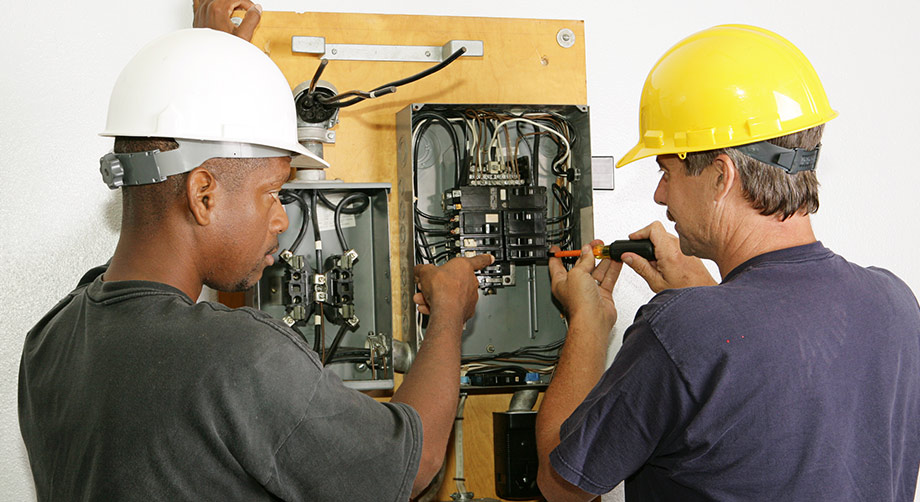STEM Education Scholarship and Award Programs
STEM Education Scholarship and Award Programs
If you’re trying to decide what type of education to get, you’ve probably heard a lot about “STEM.” But what does that mean? What fields are included? What kind of jobs can you get? It’s an awfully broad term but the Imagine America Foundation would like to help you understand it better because we think lots of you might benefit from a program in the STEM fields—and even enjoy one of the career paths that can stem from it!
What is STEM?
STEM is an acronym that stands for science, technology, engineering, and math. It encompasses a very wide range of programs and career types related to that “left-brain” type of thinking. STEM programs tend to be more analytical than artistic, with a focus on problem-solving and hands-on work. Many people may hear “STEM” and think “mathematician” or “scientist,” or assume that you need a four-year degree (or even a master’s or doctoral degree) from a traditional university to pursue these fields—but there are plenty of real-world, hands-on jobs that fall into these categories and don’t require several years’ worth of higher education.
Many skilled trades programs and career paths fall into the STEM category, including electricians, millwrights, plumbers, welders, machinists, computer programmers, and many of those related to the auto industry. These are jobs that require a background in STEM fields or concepts—a knowledge of technology, an understanding of basic or sometimes advanced math, and an ability to grasp how things work or are put together. You would have the opportunity to solve problems and create solutions in a hands-on and often collaborative environment.
If you’re not excited by the idea of sitting at a desk for 40 hours every week and you enjoy taking things apart, putting things together, or solving puzzles, a skilled trades STEM career could be the right path for you! Here are a few examples of real-world career training programs in STEM fields that are available from our partner schools:
Automotive Service Technician
The Bureau of Labor Statistics says automotive service technicians and mechanics, often called service technicians or service techs, inspect, maintain, and repair cars and light trucks. They perform basic care and maintenance, and they repair or replace worn parts.
CNC Machinist
The BLS writes that machinists and tool and die makers set up and operate a variety of computer-controlled and mechanically controlled machine tools to produce precision metal parts, instruments, and tools. They monitor the feed and speed of machines and present finished workpieces to customers.
Computer Programmer
Computer programmers, the BLS explains, write and test code that allows computer applications and software programs to function properly. They turn the program designs created by software developers and engineers into instructions that a computer can follow.
Electrician
The BLS says electricians install, maintain, and repair electrical power, communications, lighting, and control systems in homes, businesses, and factories. They inspect electrical components and follow state and local building regulations based on the National Electrical Code.
Mechanical Engineering Technicians
According to the BLS, mechanical engineering technicians help mechanical engineers design, develop, test, and manufacture mechanical devices, including tools, engines, and machines. They may make sketches and rough layouts, record and analyze data, make calculations and estimates, and report their findings.
These are just some of the skilled trades career paths available under the STEM umbrella! As technology advances and STEM fields continue to grow, there will be a need for more analytical problem-solvers like you. Check out the IAF website for more information about career training programs that may be of interest to you—and the schools in your area that offer them.
Leave a Reply Cancel reply
- - ADVERTISEMENT - -
Categories
- Alumni Series (13)
- Automotive (57)
- Aviation (15)
- Business (14)
- Business & Arts (18)
- Career College Expositions (7)
- Career Development (96)
- CCC Blog (1)
- CCC Podcast (9)
- College Resource (90)
- College Showcase – Lincoln Tech (6)
- College Showcase – New Jersey (8)
- College Showcase – Pennco Tech (1)
- College Showcase – Universal Technical Institute (2)
- Continuing Education (154)
- Cosmetology (3)
- Counselor Resources (108)
- Criminal Justice (3)
- Dental Assistant (2)
- Education (109)
- Financial Literacy (17)
- Health Sciences (50)
- Heritage Series (3)
- High School Recruitment Series (4)
- Housing Series (10)
- HVAC (8)
- Imagine America Scholarships (12)
- Information Technology (17)
- Massage Therapy (5)
- Mechanical Sciences (109)
- Medical Assistant (12)
- Millennial Student Series (4)
- News (11)
- Nursing (22)
- Online education (13)
- Pandemic Proof Series (4)
- Personal Finance (17)
- Podcast (90)
- Research (11)
- Road Map Series (2)
- Scholarships (12)
- Social Media Series (4)
- Strata Tech (3)
- Student Success (29)
- Study Tips (3)
- Time Managment (1)
- Top 10 (10)
- Trucking (2)
- Uncategorized (14)
- Universal Technical Institute (19)
- Veteran Affairs (8)
- Welding (24)
- Women in Skilled Trades (3)
Tags
- - ADVERTISEMENT - -

